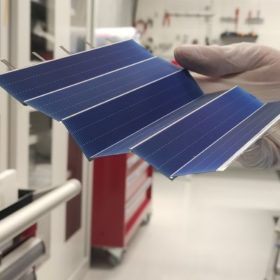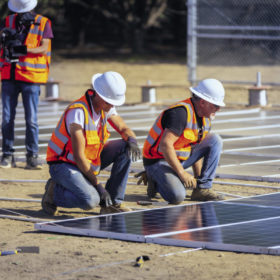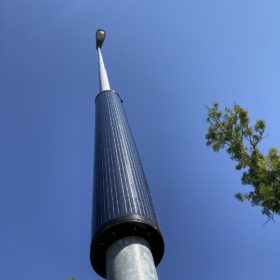Saturday read: Keys to urban solar
Buildings are considered to be a major driver of emissions. In addition to the predicted billions of square meters of space that will be built across the world over the next decade, most developments standing today will still be around in 2050. Thus, retrofitting existing structures is seen as a key sustainability target. In the fourth quarter of 2021, pv magazine’s UP Initiative will focus on the role that solar and energy storage can play in greening the world’s urban spaces.
Fraunhofer ISE develops solder-free aluminium interconnection tech for shingled PV modules
The German research institute has unveiled a novel interconnection technology for shingled PV modules that eliminates the need for electrically conductive adhesives and screen-printed busbars. It consists of an 8-μm-thick aluminium foil that is joined to the silicon nitride (SiNX) passivation via laser metal bond (LMB). When integrated in a solar module, the efficiency of the new interconnector improved by 0.7%.
Lightsource BP secures $2.5bn to develop 20-plus GW of new solar by 2025
The clean energy joint venture, which is half owned by British energy company BP, today said it expects to create around 500 jobs as it ramps up its solar portfolio from less than 4 GW to 25 GW in four years.
Sunday read: Bringing costs down to earth
Rising efficiencies and the plummeting cost of solar modules over the past few years, recent months notwithstanding, are leading innovators toward ideas that may look unusual in the current tracker-dominated world of large-scale solar parks. Advocates of the new approaches argue that they leave traditional models looking decidedly flat by comparison.
Saturday read: Game of drones
Drones have already established themselves in industries as disparate as warfare, wedding photography, and burrito delivery, and increasingly the solar sector is taking the high road, too. Combined with thermal imaging, drones have the potential to obviate expensive maintenance costs for large-scale solar plants, as well as C&I and growing niches like floating PV. But how useful are they, and what role does AI play in making the most of a bird’s eye view?
How long do residential solar inverters last?
Multiple factors affect the productive lifespans of residential solar inverters. In the second part of our new series on resiliency, we look at PV inverters.
Semi-transparent organic solar cell for window applications
Developed by U.S. scientists, the 10%-efficient device is intended for applications in solar windows and promises efficiencies close to 15%. According to its creators, the cell retained 80% of its efficiency after 1,900 hours at 55 degrees Celsius.
There’s no decarbonisation without data
WePower’s Kaspar Kaarlep offers a closer look at how we must use data to avert the worst of climate change.
Cylindrical solar panel for street lighting
Developed by an Italian manufacturer, the panel is available in three versions with a power output of 100, 120, and 240 W and has a weight of 5 kg. It is encapsulated in thermoformable plastic technical polymers and can be connected in series with other modules around the same post.
Australia branded a laggard as new report reveals China holds key to cancelling global coal projects
With pressure mounting on the world’s governments to turn their back on the fossil fuel, China and peers in South East Asia, Europe and South Asia could help deliver a coal-free future at the COP26 climate summit planned in Glasgow in November.















